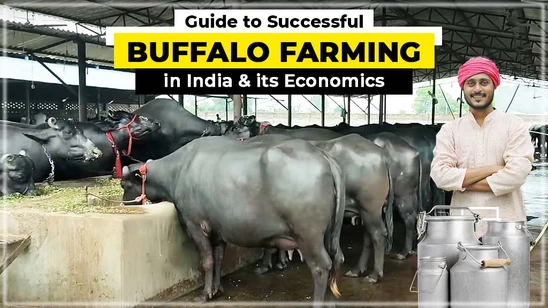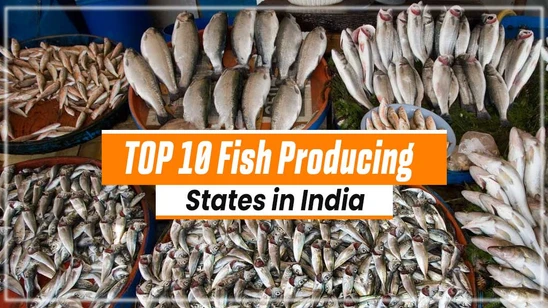Animal Feed Industry in India: Status, Importance and Challenges

Like food is critical for the sustenance, well-being, and growth of humans, animal feed is vital for the proper development of livestock in India. A balanced fodder rich in vitamins and carbohydrates helps increase per-animal productivity and the resultant animal by-products like milk, meat, and eggs. Feed and fodder contribute up to 50% to livestock productivity and production. The availability of feed and fodder is integral to the success of any animal husbandry scheme aiming to increase per-animal productivity in India. Read on to learn more about the animal feed industry in India.
Table of Contents
- Overview of the Animal Feed Sector in India
- What is the Importance of Animal Feed?
- What are the Different Types of Animal Feed in India?
- What are the Challenges Faced by the Animal Feed Industry in India?
- What are the Government Schemes for the Animal Feed Sector in India?
Overview of the Animal Feed Sector in India
Livestock has a crucial role in contributing to the Indian economy. The Indian animal feed market is among the largest feed producers globally. In 2020, it was valued at Rs. 403.5 crores. For 2022-2027, the market is expected to grow by around 15%. Even though the organized sector has been in operation for some time, it is still in its growth stage. As per a report, it only supplies 50% of poultry feed and 10% of cattle and aqua feed in India. The unorganized sector includes custom mixers and household industries and produces the rest of the feed supplied across India. In 2022, the total compound feed production for livestock was 17 million tonnes.
Animal feed comprises raw, semi-processed, and processed products. Nutritional additives like minerals and vitamins are used to formulate these products and improve overall animal health. The animal feed industry faces a shortage of raw materials like corn meal, sorghum, and soybeans due to increasing human consumption. It has led to the introduction of new ingredients, like dry distillers’ grains and insect flour. Animal feed makes up a sizeable and scalable industry because of its untapped potential. It is undergoing a growth phase and can reach the global commercial level with proper infrastructure and initiatives.
What is the Importance of Animal Feed?
- Animal feed offers suitable amounts of nutrients to animals that promote good health and increase the production of commodities like eggs and milk.
- It also enhances food security through a steady supply of high-quality animal protein to the Indian population.
- India is the leading producer of compound feed globally and thus drives economic growth. Also, the export of marine products contributes significantly to the national GDP.
- The animal feed industry employs a large population by offering skilled and semi-skilled jobs. It not only increases rural employment but also boosts local economies.
What are the Different Types of Animal Feed in India?
Fodder crops are plants grown and harvested to feed the animals. These include silage (preserved under anaerobic conditions), forage (cut green grasses), and hay (dehydrated green fodder). The following are the main types of animal feed in India:
Poultry Feed
India ranks second in the list of the largest egg-producing countries. It is also one of the leading chicken producers in the world. Poultry feed includes formulated food products for chickens, geese, ducks, and quails. A variety of ingredients like barley, rice, wheat, milk, millet, corn, and oats are used to manufacture this feed. Poultry feed is a rich source of vitamins A and D, carbohydrates, proteins, fats, phosphorous, riboflavin, and calcium. The key benefits of poultry feed include weight gain, lower stress, bone strengthening, immunity boost, and disease prevention. The poultry feed market has the largest share of the animal feed market. The main drivers of the poultry feed market are the increasing consumption of poultry-based products like meat and eggs. This market can be boosted by key initiatives like the entry of more organized players and stable feed prices.
Cattle Feed
The total livestock population in India is estimated to be 536.76 million. The traditional feed is made from straws or crop residues of bajra, wheat, barley, ragi, and jowar in powder form or whole straw. It can be provided in the form of sole feed or mixed with green fodder. Dairy animals are highly dependent on crop residues for their staple diet. There are mainly three components of cattle feed: dry fodder, green fodder, and concentrates. Concentrate feed is primarily produced by feed manufacturers. Green fodder is managed by farmers through grazing or cut grass. Branded cattle feed is becoming increasingly popular in India due to the packaged feed that offers benefits like ease of handling, high quality, and hygiene. The following are the primary ingredients of cattle feed:
|
Main Ingredients |
Percentage |
|
Grains (wheat, maize, barley, rice, sorghum) |
10 to 15 |
|
Protein meals/cakes |
25 to 35 |
|
Brans (maize bran, wheat bran, rice polish) |
35 to 45 |
|
Chunnies (urd, tur, moong, guar, gram) |
4 to 6 |
|
Molasses |
8 to 10 |
|
Vitamins & Minerals (vitamin A, D3 & E, common salt, calcite powder, mineral mixture) |
1 to 2 |
|
Agro-industrial by-products (tapioca waste, mango kernel extraction, tamarind seed powder) |
5 to 7 |
Aqua Feed
India stands in the third position in the list of top fish-producing countries, with a contribution of 8% to global fish production. The aquaculture industry is also booming with an increase in the demand for fish. It has resulted in the growth of aqua feed industries. In 2008, the first extruded feed mill began operations in India. Aqua feed is important for aquaculture as it fulfils the nutritional demands of aquatic animals. Its key ingredients include fish oil, fish meal, cereal grains, vitamins, and minerals. It facilitates the healthy growth and production of aquatic species, including shrimp and fish.
What are the Challenges Faced by the Animal Feed Industry in India?
The animal feed sector in India is facing several issues that have impacted the overall productivity of the available livestock, thus affecting Indian agriculture, economy, and rural livelihoods.
Land Constraints
Due to limited cultivable land, there is a shortage of quality fodder. Also, the primary focus is to grow food crops in arable land, which further leads to land constraints for fodder. The cultivable land for growing fodder is declining in India. The area under fodder production has not increased in the last four decades. It has remained stagnant at 4% of the gross cropped area. As a result, India has a mesh shortfall of about 64% of feed, 61.1% of green fodder, and 21.9% of dry crop residues.
Increasing Demand-Supply Gap
The demand-supply gap in the fodder sector in India is glaring. The supply of animal feed has always been short of the standard requirement. According to the 19th Livestock Census data, the fodder requirement is 583.66 metric tonnes of dry fodder and 883.95 metric tonnes of green fodder. However, the estimated production is 355.93 metric tonnes of dry fodder and 664.73 metric tonnes of green fodder.
Lack of Quality Standards
The feed and fodder production in India is not only low in quantity but also low in quality. There is a lack of high-nutrient fodder for livestock. It results in issues like slower weight gains and lower milk yields across cattle and poultry. Due to poor quality control, there are low-quality or counterfeit feeds available in the market. It not only affects animal health but also lowers farm productivity.
Further, to meet the full genetic potential of livestock, proper feed with adequate nutritional content, such as vitamins, carbohydrates, and fat, must be fed to animals. In fact, the low quantity and quality of fodder has raised the problem of feed security for over 500 million livestock in India.
What are the Government Schemes for the Animal Feed Sector in India?
To address the issue of the availability of feed and fodder in India and favour the animal feed sector, the Indian government has launched several schemes.
- Animal Husbandry Infrastructure Development Fund (AHIDF): Under the scheme, eligible entities can avail of a loan of up to 90% of the project cost for setting up an animal feed manufacturing unit. Besides, the government provides an interest subvention of 3% for a period of two years.
- Livestock Insurance Scheme: This scheme protects cattle rearers and farmers from losing their farm animals due to death. It provides insurance cover for up to 2 animals per beneficiary for a period of 3 years, and the government bears the 100% cost.
- Rashtriya Gokul Mission: Launched in 2014, this mission aims to conserve and develop the country's indigenous bovine breeds.
- National Livestock Mission: The NLM scheme seeks to generate employment through the development of entrepreneurship in selected livestock and poultry. It provides a capital subsidy of 50% for setting up a livestock and poultry farm project.
As India is developing to become a global leader in dairy and other animal products, there is a need to evolve its feed industry. Animal feed production must be increased to meet increasing demand. Also, there stringent quality standards are required to produce high-quality feed for domestic and international markets. Modern farming practices and advanced technologies can enhance both efficiency and sustainability in the animal feed industry. Overall, there is a huge growth potential in the Indian animal feed industry that can benefit both farmers and consumers.
Frequently Asked Questions On Animal Feed Industry in India: Status, Importance and Challenges
1. What is the animal feed industry?
The animal feed industry deals with the production and supply of food for livestock.
2. How big is the animal feed industry?
The animal feed industry in India was valued at more than INR 1,000 billion in 2023.
3. What are the 3 types of animal feed?
The three types of animal feed are cattle feed, poultry feed, and aqua feed.
4. Why is the animal feed industry important?
The animal feed industry helps sustain the livestock of India and the livelihoods of rural India.


Related Blogs















